Das Olympische Bildungsmagazin
Der IO-Bericht: Kritik an den Dopingkontrollen in Peking
- Jens Weinreich
- 10. Oktober 2008
- 23:22
- 28 Kommentare
Während mancher Kommentator in den vergangenen Tagen vorschnell ein hartes Eingreifen des IOC in der Dopingfrage bejubelte, weil unter für mich durchaus mysteriösen Umständen angekündigt wurde, die Blutproben von Peking noch einmal analysieren zu lassen, empfiehlt es sich, die wenigen Fakten ins Licht zu rücken. Zum Beispiel den Bericht der so genannten Independent Observer für die Dopingkontrollen während der Peking-Spiele.
Denn dieser Bericht liegt dem IOC seit dem 19. September vor, der Öffentlichkeit seit wenigen Stunden. Nur hat das bisher kaum jemand bemerkt. Soweit ich diese 50 Seiten auf die Schnelle überblicke, finde ich doch einige hoch interessante Sachverhalte. Manches kommt hammerhart und entlarvt einige Lügen der olympischen Branche. Die wichtigsten Punkte will ich flink mal zur Diskussion stellen. Ich frage mich einmal mehr und entschuldige mich gleich auch für meine Wortwahl: Wie lange wollen die uns eigentlich noch verarschen?
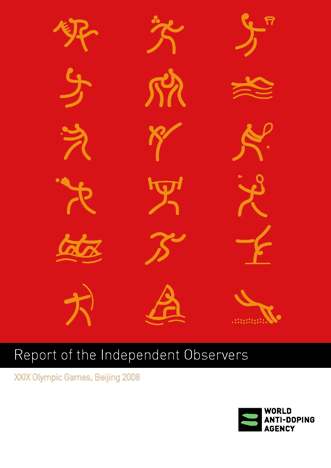
Bevor ich einige Beispiele bringe, kurz zur Klarstellung: Während der so genannten Olympic Period (27. Juli bis 24. August) gebot das IOC über die Dopingkontrollen – wie immer bei Olympischen Spielen. Wie immer bei den Spielen war die World Anti-Doping Agency (Wada) nur Beobachter. Eingesetzt wurde eine zwölfköpfige Gruppe von Independent Observern, geleitet von der Engländerin Sarah Lewis, Generalsekretärin des Ski-Weltverbandes Fis.
***
1. Die Meldepflicht
102 Nationale Olympische Komitees (von 205) haben die Whereabouts ihrer Sportler in Peking nicht angegeben. Nach Ermahnungen lieferten nur 8 NOK Informationen. Das IOC handelte nicht.
3.5.2 After the reminder issued by the IOC Medical Director at the NOC Team Doctors Meeting on 7th August 2008, the number of NOCs providing whereabouts information increased, but there were nevertheless approximately 102 NOCs (half the total participating NOCs) who did not provide whereabouts.
During the Games, the IOC did not take any further action against those NOCs who were non-compliant with the Athlete Whereabouts Requirements of the IOC-ADR, however the IOC Medical Director and Doping Control Administrative Coordinator informed the IO Team that the NOCs concerned will receive written notification about their non-compliance after the Games.
***
2. vorolympisches Blut-Screening
Hier haben nur 4 von 28 olympischen Weltverbänden mitgemacht – und nur einer nutzte die Ergebnisse auch in Peking, wenn ich das richtig verstehe. Nicht die Radfahrer, die ja bekanntlich keine Blutpanscher sind, sondern die Fünfkämpfer.
2.4.3 Four IFs carried out pre-competition blood screening, IAAF (Athletics), UCI (Cycling), FISA (Rowing), UIPM (Modern Pentathlon).
This testing was outside of the scope of the IOC WADA-BOCOG pre-Games Testing or In-Competition Testing. The four IFs used the same testing protocol and the results were used for their own information purposes, which may have been used for potential target testing of Athletes with suspicious blood values.
Modern Pentathlon was the only IF that used the pre-competition blood screening in Beijing to determine a no-start for Athletes whose haematocrit exceeded their rules of 50 for men and 47 for women or haemoglobin values of 17 dl/g for men and 16 dl/g for women.
***
3. Das Pekinger Labor wurde nicht kontrolliert!
Tja, das habe ich in Peking von IOC-Leuten und Wada-Offiziellen ganz anders gehört.
Observation of the work of the WADA accredited Laboratory was not part of the IO Assignment in Beijing.
The reason for this was that the Laboratory is independent of the owner of the Olympic Games, the IOC and the Organising Committee BOCOG. And the Laboratory has been granted accreditation by WADA who receives the results of all adverse analytical findings, as provided for in the International Standard for Laboratories.
Furthermore, the Laboratory was supported by 17 highly experienced international WADA accredited Laboratory directors and technicians who were carrying out the analyses, as well as supporting the operation. Additionally the Laboratory’s work was overseen by members of the IOC Medical Commission, who are themselves WADA accredited Laboratory Directors.
***
4. Observer werden nicht zu Meetings zugelassen
Zwar fanden zahlreiche Gespräche mit Mitgliedern der IOC-Medizinkommission, dem Laborchef und anderen statt, doch bei den regulären Meetings und den TUE-Verhandlungen (siehe Punkt 8) mussten die Observer draußen bleiben. Ihrer Kontrollaufgabe konnten sie somit nicht nachkommen.
Other than the Meeting of the IOC-MC on the final day of the Olympic Games, the IO Team was otherwise not invited to attend the first two meetings of the IOC Medical Commission or any of the daily informal meetings of the IOC-MC, the IOC-MC and BOCOG Doping Control or discussions in the IOC-MC TUEC.
***
5. Ooops: 300 von 4770 Testergebnissen fehlen den Observern
An area that left room for improvement was the administrative reporting of the Laboratory. Additionally there is considerable potential to make the results management administrative work more efficient and less susceptible to mistakes through multiple administrative systems used by BOCOG and the IOC. Since the development over the past few years of ADAMS, a secure integrated administrative programme specifically for doping control management, its‘ use at the Olympic Games would make the processes much more efficient for all parties.
This is underlined by the fact that once the Laboratory had apparently delivered all reports to the IO Team, it transpired that around 300 test results were missing in comparison to the doping control forms. The IO Team therefore checked the status of the receipt of these Laboratory results with the IOCMC, but at the time of the delivery of this report on 19th September 2008, the IOC had not been able to finish processing the test results from the Laboratory. They believed however, that they too may be missing some reports.
***
6. Der fehlende Insulintest
Ich habe vorgestern gerade noch auf einen Artikel von Grit Hartmann dazu im Stern verlinkt, in dem beschrieben wird, das eine im Kölner Labor entwickelte Testmethode nicht akzeptiert wurde: Wada ignoriert neue Testmethode. Eine IOC-Sprecherin hat während der Spiele behauptet: Es gebe keinen Insulin-Nachweis, der valide ist. „Die Olympischen Spiele sind nicht der Ort für Experimente auf dem Feld im Kampf gegen Doping.“ Die Independent Observer halten fest:
VIII. The IO Team was informed by an IOC-MC Laboratory observer that the WADA accredited Laboratory in Beijing was unable to test for insulin. The IOC Medical Director was of the opinion that the WADA accreditation of the Laboratory determines which substances are tested. General practice, however, is for the client to decide on the test menu directly with the Laboratory. Nevertheless, all samples will be stored for 8 years to enable eventual re-testing, should the IOC deem this to be necessary in any cases.
a) During the process undertaken by WADA to accredit the Laboratory for the Olympic Games, verification is required that the Laboratory is equipped to analyse all substances on the Prohibited List. Should the Laboratory not have the equipment or know-how to handle any substances or methods on the Prohibited List, the IOC (the Client) must be informed in order that it can review this with the Laboratory.
Ich kann mich täuschen, aber meine Informationen sagen, dass das Pekinger Labor sehr wohl in der Lage war, den Test durchzuführen. Derjenige, der den Test entwickelt hat, war ja auch vor Ort. Doch der Test war nicht gewollt. Ein paar Wochen später wurde er bei der Deutschland-Tour erstmals eingesetzt.
***
7. Testosteron/Epitestosteron-Quotient – Auffälligkeiten
Das Pekinger Labor hat 140 auffällige Proben nicht als auffällig gemeldet.
In the course of the review of the Laboratory results received by the IO Team, there were approximately 100 samples where the T/E ratio exceeded the reporting level of 4 and another 40 samples reported elevated levels of other reportable substances, each of which subsequently each had a negative IRMS test. As a consequence they are therefore not considered as an adverse analytical finding.
The IOC Medical Director informed the IO Team, that the IFs would be sent a copy of the test results for elevated T/E samples following the conclusion of the Olympic Games. It would then be the responsibility of the respective IF to investigate the status of the Athletes in question, whether there is a case history on file, or if follow-up testing is required, as provided for in the International Standard for Testing.
Nevertheless, the elevated T/E ratios were reported by the Laboratory as negative, and not as Atypical and without mentioning the T/E values, which is not in accordance with the International Standard for Laboratories (see item V. of Comments and Issues to Laboratory Services (3.10) above).
***
8. Die Ausnahmeregeln, Therapeutic Use Exemption
Ohne Kommentar, nur kurz den Link zur Erklärung der TUE.
5.1.5 The chairman of the IOC-MC TUEC reported at the conclusion of the Olympic Games as follows (summarised): Of the total of 40 TUE applications submitted, all except one were approved. The Athletes were from 19 NOCs and 17 IFs.
- 813 applications were submitted for the use of beta 2 agonists (IBA).
- 781 were approved, 147 of which were for Athletes already granted for the Olympic Games in Athens, 2004. 711 of the 781 approved applications also took inhaled corticosteroids (ICS), as did 16 of the rejected IBA applicants. An additional 121 Athletes submitted a TUE applications for ICS.
- 271 TUEs were acknowledged for the use of injected corticosteroids (injCS). This number was substantially lower than Athens 2004, since the reporting threshold has been increased from 1 ng/mL in 2004 to 30 ng/mL in 2008.
Das soll fürs Erste genügen. Ganz erstaunlich finde ich, dass die Wada die Veröffentlichung dieses Berichtes nicht mit einer Pressemitteilung begleitet hat, sondern offenbar gestern nur still und leise auf ihre Webseite gestellt hat. Wer mag, kann sich diese 50 Seiten als pdf downloaden. Viel Vergnügen.
***
Nachtrag am 13. Oktober:
9. Epo-Tests
Evi Simeoni fällt in der FAZ das hier auf, und Recht hat sie:
Kritik übten die Wada-Gesandten auch am Spektrum der Anti-Doping-Tests. So seien nur 817 Urinproben auf das weitverbreitete Dopingmittel Epo untersucht worden. Das hält die Gruppe angesichts einer Rekord-Gesamtzahl von 4770 Tests für verhältnismäßig wenig. In unterschiedlichen Sportarten wurden nur die Sieger, in anderen die Medaillengewinner, Rekordler und manchmal auch noch ausgeloste Athleten auf Epo getestet.
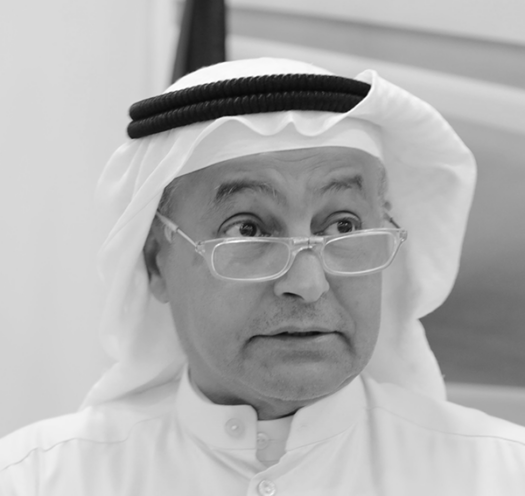


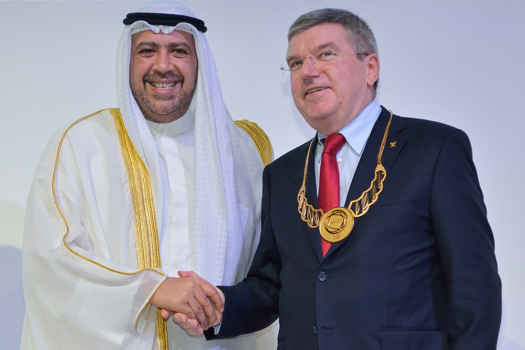
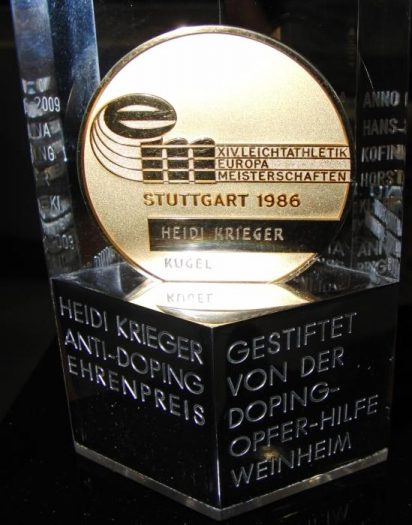
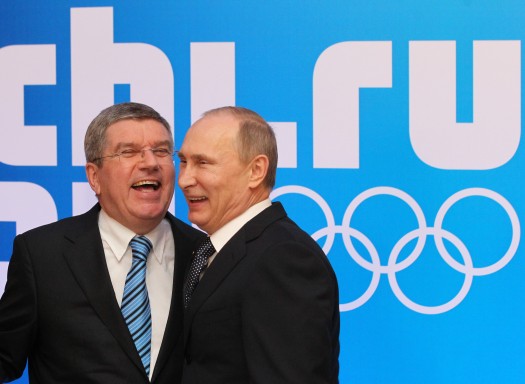
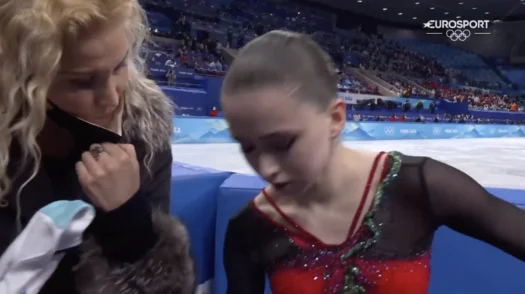
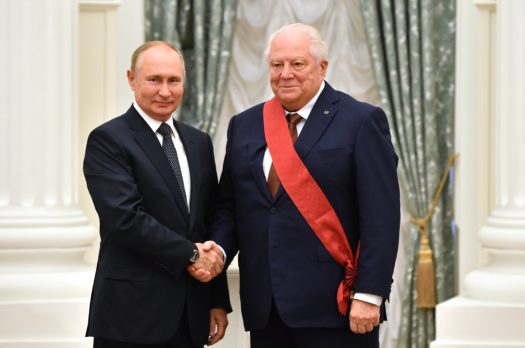
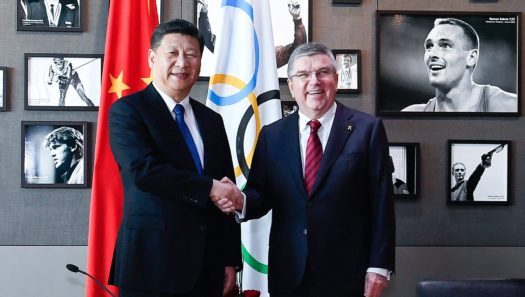
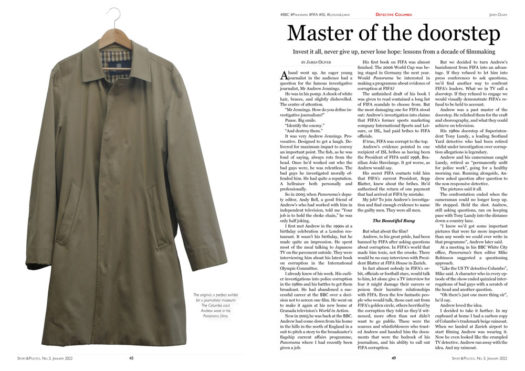
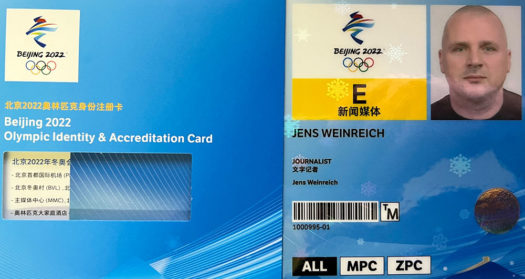
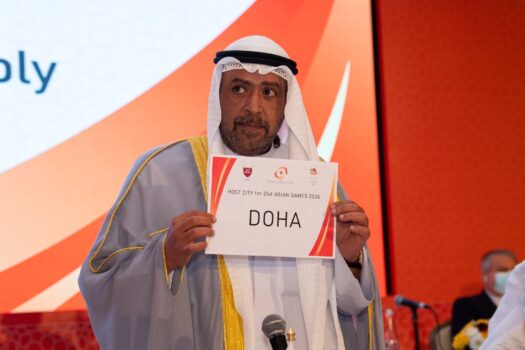
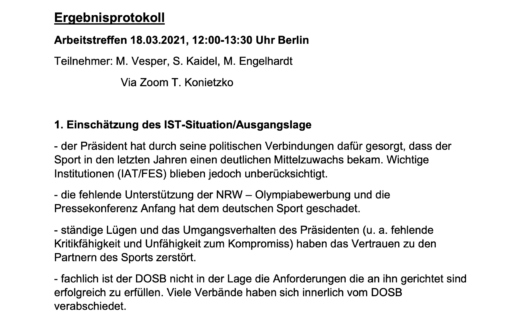
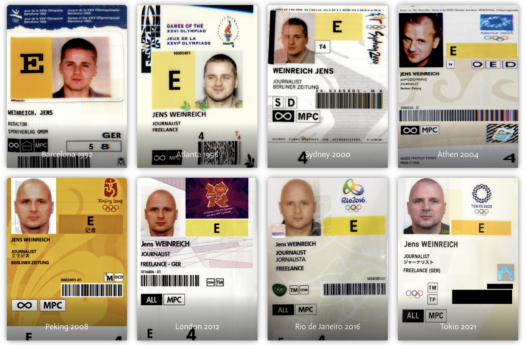
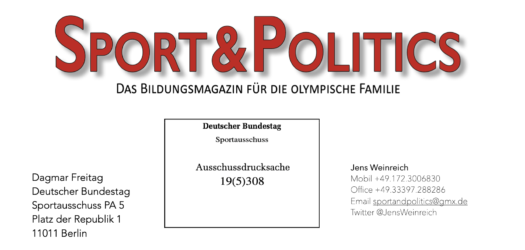
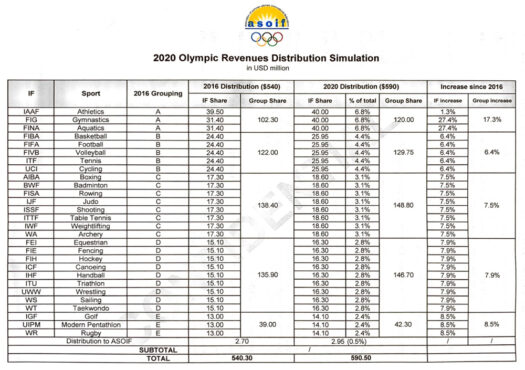
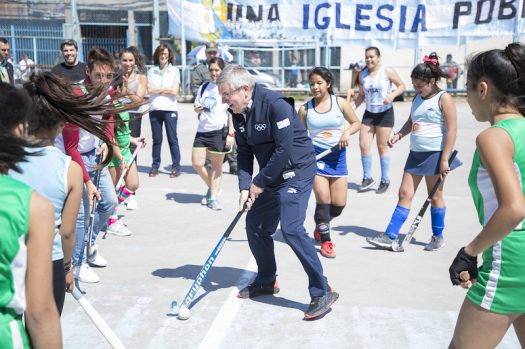
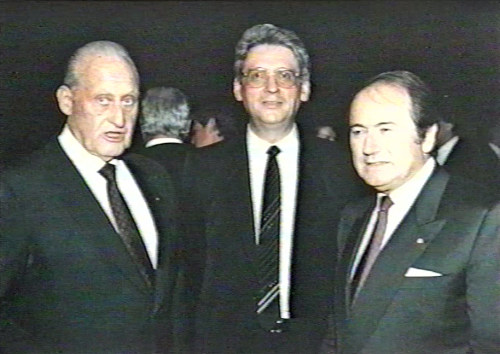
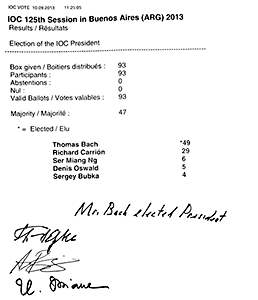

Sehr aufschlussreich, und verstörend. Bei derlei Zuständen hätte Lance Armstrong doch ruhigen Gewissens wenigstens einmal bei den Olympischen Spielen starten können.
Im Vergleich zu vorherigen Spielen: Ist es, wenn nicht besser, dann zumindest etwas weniger schlecht gewesen in diesem Jahr?
Und dann noch eine Bitte: Überlassen Sie Vokabeln wie „hammerhart“ und „verarschen“ doch bitte dem verehrten Werner Franke. In dessen berechtigte, aber oft wenig hilfreiche Tiraden zum Thema „Sportgroßereignis = Volksverdummung“ passen die besser hinein als in ihren schönen Blog.
Optimistisch interpretiert: Das IOC weiß also doch schon ganz genau (100 x auffälliger T/E-Quotient und 40 weitere Proben mit reportable levels irgenwelcher Substanzen), welche Proben es „retroaktiv“ nachkontrollieren kann, mit Geräten, die vielleicht besser sind als im Pekinger Labor …
Kann irgendein Experte erklären, ob Punkt 8) richtig interpretiert ist: Ganz wenige TUEs, viel weniger als für Athen, bloß 271, für die Injektion von Coticosteroiden – weil das genehmigte Level für diese Dopingknaller seither einfach mal verdreißigfacht wurde?
Klingt alles schwer nach Nulltoleranz. Auch das großartige vorolympische Dopingtestprogramm bei der Hälfte der Nationen, bei denen, die denn so freundlich waren, ihre whereabouts mitzuteilen.
@Jens
Aber Du solltest wirklich auch das Positive erwähnen: Die chinesischen Kontrolleure!!!
S. 17
„A memorable incident was observed by an IO,
with an extremely diligent chaperone following
the letter of article 5.3.1 of the Technical
Procedures Relating to Doping Control in
“where possible, be physically beside the
Athlete�? as he proceeded to run behind the
Athlete who was with the entire team on their
lap of honour of the hockey pitch after one of
the early group stage matches. From the
touchline the Athlete was in full view to
observe. Another occasion saw a chaperone
gathered into, or perhaps under, a successful
team’s huddle after a basketball match.“
Nur schade, dass dann auf den Kits und Formularen auch gleich vermerkt war, auf welche Substanzen die Proben kontrolliert würden, die Athleten also spätestens mit der ersten Kontrolle wussten, worauf in ihrer Sportart getestet wird.
Die Deutsche Presse-Agentur schreibt gerade:
Hat die Sportschau das? Hier im Blog gabs eine ausführliche Auswertung des Berichts schon am Freitag.
Übrigens: Ob die Formulierung „IOC verschweigt“ juristisch haltbar ist, bezweifle ich.
jo. hat sie scheinbar:
http://sport.ard.de/sp/layout/jsp/komponente/mediaseite/sportschau.jsp?sdr=303&id=62619#mbContent
(die ersten (ca.) zwei drittel drehen sich allerdings nochmal um schumacher… im letzten drittel dann olympia-programm – auch das geschätzte UDIOCM darf da übrigens seine sonore stimme erklingen lassen)
genau genommen leuchtet die olympische fackel ab 3:30 von 6:04. das UDIOCM spricht geschlagene 15s von 3:44 bis 3:59.
Der Direktor des Lausanner Labors zu den IOC-CERA-Tests:
«Wenn überhaupt, werden wir in den Peking-Proben nur wenige Cera-Fälle finden.»
NZZ
Ich habe die NZZ-Geschichte auch gerade gelesen. Und weil er das sagt, weil die Sportler ja nach der Tour gewarnt waren, scheint mir das ein Argument mehr, die plötzliche Aufklärungswut des IOC anzuzweifeln und sie besser als Propaganda zu bezeichnen.
Ich empfehle übrigens die Nachrichten bei cycling4fans, da fand sich auch der NZZ-Hinweis und einiges mehr, etwa ein Gespräch mit Horst Pagel von der Uni Lübeck: Epokalypse now.
Pingback: Was vom Tage übrig bleibt (8) : jens weinreich
dpa: Pharmakologe: IOC-Kunstfehler bei Doping-Proben
http://www.ftd.de/sport/:Pharmakologe-IOC-Kunstfehler-bei-Doping-Proben/425481.html
Heute bei sport inside: „Negativ wirkt positiver“ – Wie das IOC die Dopingbilanz der olympischen Spiele in Peking verschönerte (von Hajo Seppelt und Jochen Leufgens)
http://www.wdr.de/tv/sport_inside/sendungsbeitraege/2008/1013/doping.jsp
Pingback: Vom Umgang mit Dopingproben : jens weinreich
AP: WADA satisfied it has received all test results
http://www.usatoday.com/sports/olympics/2008-10-28-1995335287_x.htm
WDR: Lücken bei olympischen Dopingkontrollen
„Auch Nachtests auf die in Lausanne lagernden Dopingproben der Sommerspiele 2004 und Winterspiele 2006 werden im IOC erwogen“
http://sport.ard.de/sp/weitere/news200812/07/doping_peking.jsp
spox.com: Bach fordert internationales Kontrollsystem
FAZ: „Positive A-Probe reicht“
Xinhua: China catches more drug cheats in furious anti-doping storm in 2008
23 positive Fälle bei 11167 Kontrollen macht 2.1 Promille!
Ralf, sie hatten es also „under control“. Und dann noch im Ergebnis von Selbsttests.
politiken.dk: IOC ignores own doping rules
Ralf, das hat dann doch hoffentlich nichts mit der Wahrung der Einheit der olympischen Bewegung zu tun ? Sondern eher mit der weiteren Erhöhung seiner Profitabilität.
Wenn wir dann in den Kontrollreport der unabhängigen Beobachter der WADA schauen, bleiben zu jeden Spielen Fragen offen. Mal wird die hohe Zahl der Medikationen der teilnehmenden Sportler kritisch gesehen, diesmal war es die Frage der whereabouts, wo die NOKs zurückhaltend kooperierten. http://www.wada-ama.org/rtecontent/document/WADA_IO_Report_Beijing_2008_FINAL_en.PDF
Da drängt sich sich der Eindruck auf, dass die Independent Observers zur Formalität „verkommen“ und deren Beobachtungen und conclusions nicht so recht von der WADA wahr genommen werden.
Pingback: Die Peking-Nachlese: sechs Cera-Fälle : jens weinreich
Pingback: Dopingkontrollen in der Leichtathletik : jens weinreich
WADA: Vancouver Olympic Games Independent Observer Report
Der Bericht der IO liest sich wie vom IOC selbst geschrieben:
Kein Grund zur Unruhe, wir haben alles im Griff. ;)
Soweit ich mich erinnere, sahen die Reports vergangener Spiele energischer und beunruhigender aus.
Aber wenn die deutsche Vertreterin in der Kommission, unsere zweifache Olympiasiegerin Meike EVERS und heutige Polizeidetektivin, auch nichts Beunruhigendes findet, ist ja alles in Butter.
Mal seh´n, vllt. äußert sie sich wie der Dopingexperte Professor Mario Theves auch noch persönlich zur ihrer Arbeit in der Kommission.
CP: Don’t waste so many doping tests on curlers, says Olympic doping control report
Pingback: #London2012 (VI): Doping, HGH-Nachweis, Pound-Kritik, WADA : jens weinreich
Pingback: Was vom Tage übrig bleibt (72): Paul Kimmage Defensive Fund, UCI in IOC tradition, WADA Independent Oberserver Report #London2012 : sport and politics
Pingback: Russland nimmt Kurs auf die Winterspiele 2018 in PyeongChang: nächste Ausfahrt CAS • Sport and Politics